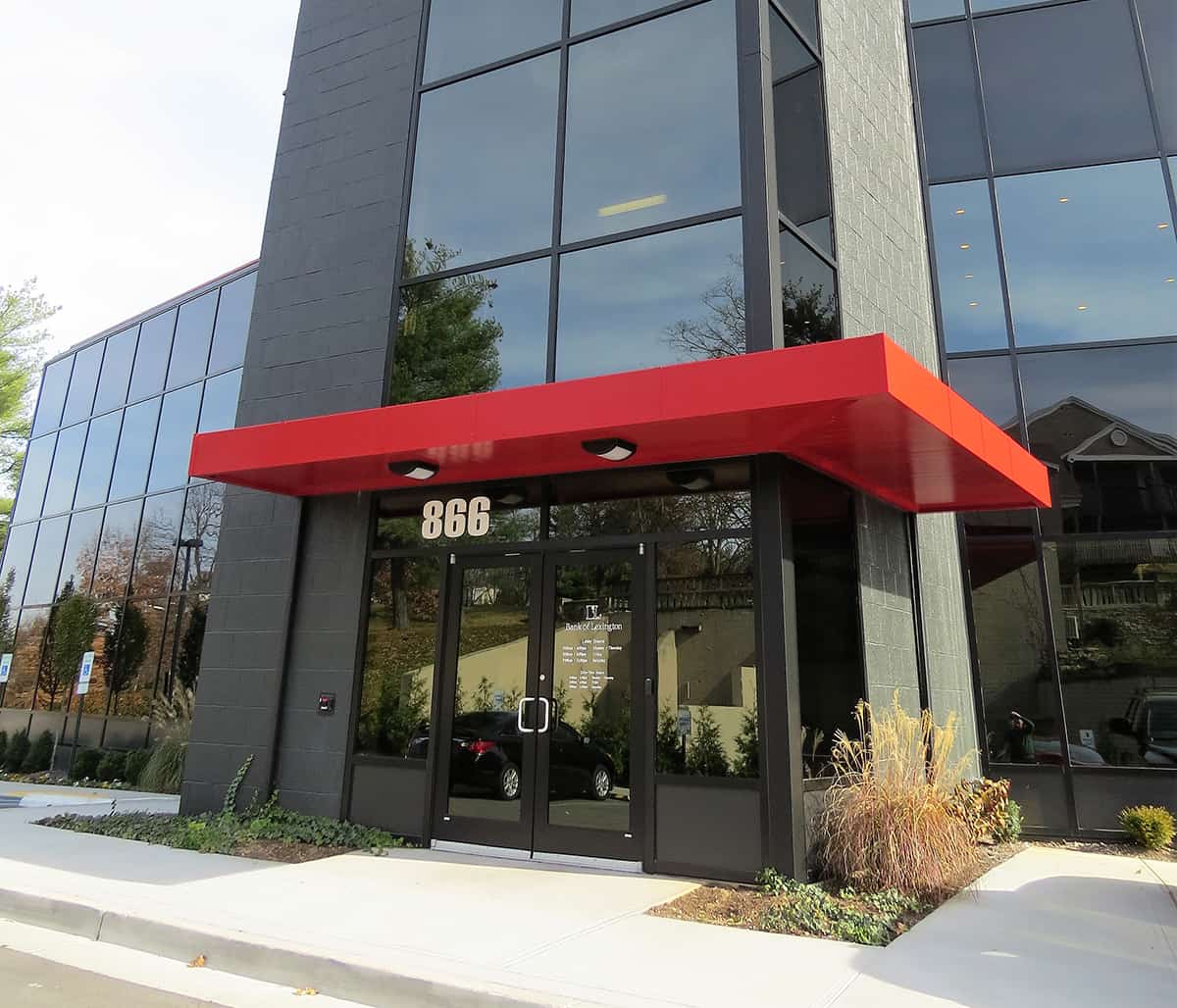Architectural Paints

THE IMPORTANCE OF WHAT, WHERE AND HOW
When you specify an architectural canopy, you know it’s an investment that must withstand the test of time and weather, which is why every material must be considered––from the substrate to the finish. Paint is an essential element when it comes to the aesthetic value and longevity of your canopy. Lower-grade liquid paints and in-field paint application by spray, brush or roller are common and can result in a variety of problems, such as peeling and fading. For long-term durability and color stability, the paint type and quality, as well as the application methods must be taken into account.
PAINT INGREDIENTS AND WHAT THEY MEAN FOR DURABILITY
Paints are fundamentally made up of resins, pigments, binders and solvents. Resins hold the pigments in place, creating a film or coating that determines the color stability, longevity and performance of the paint. In the architectural industry, the paint systems that offer the most durability include PVDF resin or baked-enamel.
PVDF RESIN-BASED PAINTS AND WHY THEY’RE WORTH THE COST
Many organic compounds will degrade when hit with ultraviolet light from the sun. However, the PVDF resin bond is stronger than UV light energy, so a high-quality paint of this type will stay in its original state far longer, keeping its color brightness. The farther south a project is located, the closer to the equator and the more intense the UV rays.
In sun-intense environments, a paint system made with 70% PVDF resin, meeting AAMA 2605 specifications, is by far the best choice, otherwise re-painting costs will need to be built in to the price. When long-term durability and color stability are desired, a high-quality PVDF paint justifies the cost because you can eliminate much of the maintenance. In addition, the brighter the color choice, color stability should be the dominant decision factor.
BAKED-ENAMEL TYPE PAINTS—ALSO VERY GOOD CHOICES
When the scope of a project does not demand that a paint provides long-term color performance, or if budgets cannot accommodate the very best paint finishes, another good choice is a baked-enamel finish. These paint systems include premium acrylic or polyester enamel resins, or various powder coatings. Baked enamel formulations meet AAMA 2603 specifications. Although color fastness is not as great as with a PVDF-type of paint, the tradeoff of more scratch and abrasion resistance might make baked-enamel a better choice of paint finish at a cost savings.
WHY FACTORY APPLICATION IS ANOTHER ESSENTIAL CHOICE
Paint types and ingredients are important, but another consideration when choosing paint for your architectural canopy is application. A controlled, factory application is extremely critical to ensuring a quality paint choice delivers all of its capabilities. In-field cleaning and prepping is less than ideal, as the environment can’t be controlled. The condition of raw materials, as well as temperature and humidity, are all vital to a paint drying and adhering well. In fact, often when a paint does fail, it’s due to the paint adhesion to the substrate. This failure can be seen as flaking or peeling, and the base material begins to oxidize from exposure. Aluminum and steel used for architectural purposes have natural surface characteristics and contaminants, and cleaning processes and prepping must be followed in order to ensure a quality finish. Application done by professionals who understand both base materials and paints are required. When the cleaning, surface preparation, paint application, final baking and curing are done in a factory setting, a long and attractive finish is the result.
MAPES ARCHITECTURAL CANOPIES ONLY USES HIGH-QUALITY, IN-FACTORY FINISHES
When you select a Mapes Canopy, you can be sure that every aspect of your choice is unrivaled, including the paints. At Mapes, we only use the highest quality paints on our architectural pieces, pre-finished in-factory to assure you a long-term, maintenance-free aesthetic.

